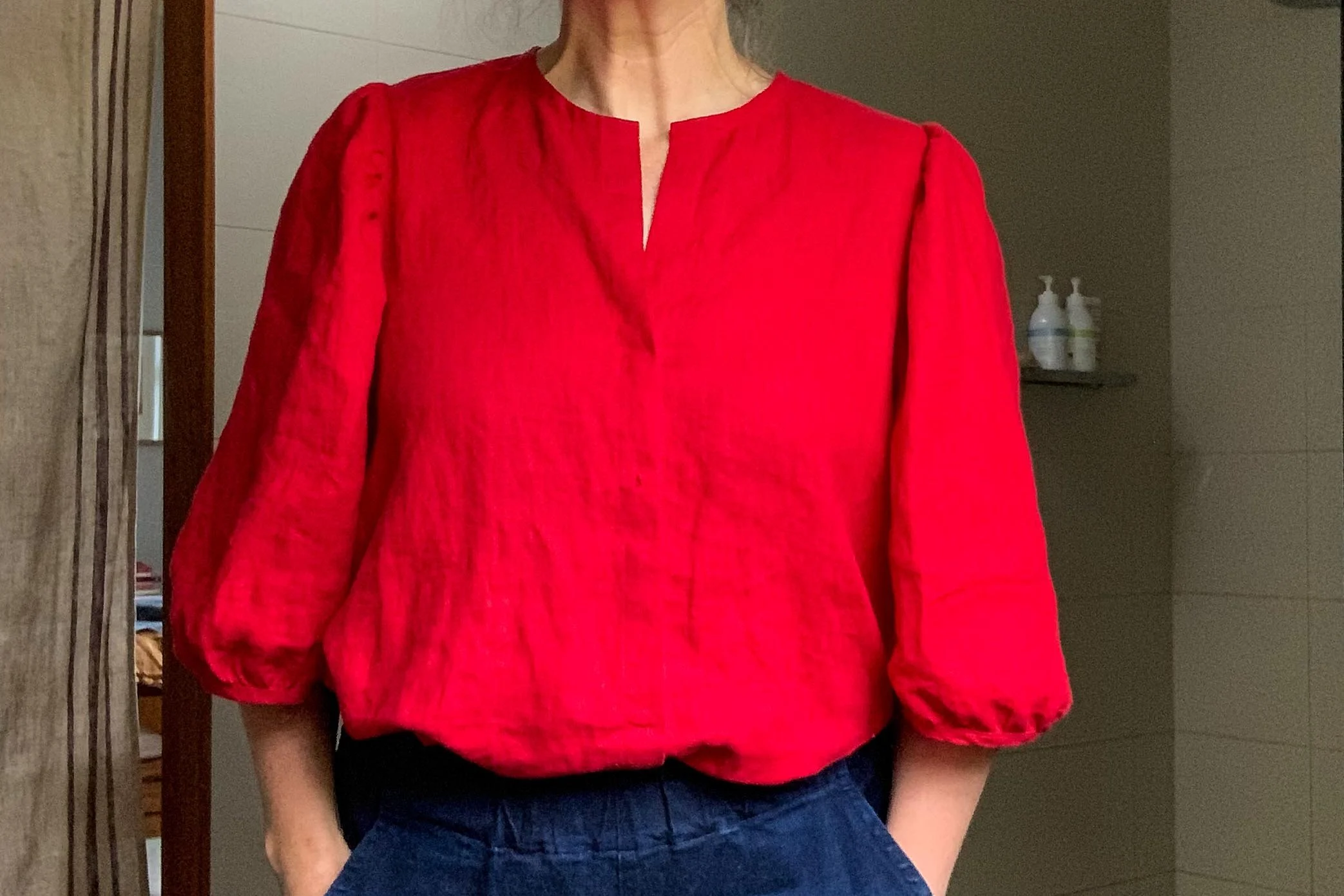After my many years of making things, I still forget about this part of the process. That part of the ongoing learning of craft (and of life) where you realise yet again that you don't know what you don't know.
You thought you knew but you didn't. And you didn't even realise that there was a question you should be asking.
It can happen to you anytime, whether you are at the start of your crafting journey, or way down the track. And just this week it's happened to me.
So I've had a couple of dark-ish weeks. A combination of winter and busy meant that I got a little off-kilter, and when that happens I look for freedom in craft and so go off piste and start making random things without much planning. Sometimes this can lead to amazingness and sometimes it just leads to more of the off-kilter feeling.
This time around, I started a sweater that I was totally sure was going to be the business. I sketched out the colourwork, was super happy with my colours and my improvised pattern, and was hooning through the knitting....until.... it wasn't.
By this time I'd shifted the off-kilter feeling by doing all the things I needed to do. I stopped blogging, I got off social media, I did a bit of exercise, and a small amount of drinking (mainly with friends ;-) ) .... and at the end I was kind of left with a crafting hangover. My colourwork sweater didn't exactly turn out how I thought. I was thinking it would be amazing, but instead it kinda looked a little bleurgh.
I am not a one-craft specialist. I am a everything-ist, and as such I only learn about something like colourwork when I am actually making something that includes colourwork. When I do learn about it I don't get totally obsessive* and study every book ever written on a subject. I learn what I need to through the lens of the specific projects I want to tackle.
I thought this colourwork project was no big stretch for me. I've done quite a bit of colourwork - many things over many years. I've made some things I totally love from scratch. My thinking was "I've got this". I believed I knew what I needed to know to make it spectacular.
Turns out not so much. This yoke did not work. And the reason why it didn't work was not even on my radar.
In the planning of the sweater I had studied yoked sweaters to see what I liked. My post why all crafters need a visual diary talks about this. I did what I suggested in that post and studied the ones I had saved in my favourites on Ravelry to look for similarities. I knew that I didn't like it when white was a main background colour. It tends to make the yoke too stripey for me. I want a more integrated looking non-stripey yoke. I also knew that I liked a fairly limited palette with only 4/5 colours.
So I sketched out a plan. I used one of my favourite motifs and combined it with another simple stitch pattern. I like simple. My plan was simple. All good so far. I had colours I liked, a stitch pattern I liked and I was off.
A spot of freestyle knitting.
However, what I didn't know was that my past adventures in colourwork didn't prepare me for this type of yoke. Changing the background colour of a sweater is a tricky proposition. And my past adventures into colourwork have either
- involved tweedy yarns which blur your colour changes so blocky stripes are less of an issue OR
- they have involved sparse colourwork on a plain background which means you are only essentially working with one colour not two.
This yoke involved plain yarns (no tweed) and a changing background. The skills you need to make it work are different.
For example you need to really understand value and how visible your colour changes will be. You need to think about whether the pattern is sparse or blocky. You need to think about how to integrate your colour changes so that it doesn't look stripey - if stripey is not what you want. To get it to sing you need to get how this stuff all works. Not something I have done before.
What I sketched didn't work. It looked fine when I mocked it up in Excel but not in real life. The grey had the same effect the white background would have had and made it stripey because there wasn't another colour change for the foreground going on at the same time as the background. I realise this is a long complicated tangled explaination but the important bit is that I can see where I went wrong. I learnt something big.
My second major error was the inclusion of two strikingly different patterns. One was sparse - the VVV - and the other pattern was more solid blocks of colour. They simply looked odd together. And the sparser pattern didn't work really at all with a change in background. When I've used it in the past - and loved it - it has been a simple sweater with that single pattern and no background changes at all. Again I learnt something big.
So I ripped our the yoke without pain or grief or even a glass of wine. It was wrong and then it didn't exist.
There was a small bit of twitchiness around the fact that I had got it so wrong, while feeling that I had it so right. Because that is where the rub is, isn't it. When we are learning something new - especially when we don't realise we have something new to learn - it's humbling. Even believing that mistakes are how you learn I think I have this feeling that one day if I keep practising that I will know it ALL. That this won't happen anymore. OR maybe I hold onto the idea that if I could just find the right book or website that I would hold all the knowledge there is.
But we can't. Because learning doesn't work like that. And that is where the true joy of an ongoing practice of making comes in. There will always be more to learn, more to understand. There will always be things we haven't thought of and new mistakes to make. That is part of the magic. We can never know exactly how a particular material will respond to a being shaped into a particular pattern. We guess, we plan, but really sometimes it's only in the making itself where we can see if our idea works.
We can only learn things slowly. We can't hurry the process. We can't gulp knowledge down and this is especially true as we practice the art of craft.
Bit by bit we inhale the learning like oxygen, one breath at a time. We need to breathe out before we can take the next bit in. The breathing out is the important part as it creates the space within our lungs to take the next breath. And it gives our body time to make use of the the oxygen it received; for that last breath to become part of our cells, changing us in some unseen way one tiny molecule at a time.
We are constantly learning as we make. That learning is changing us and how we look at the world. Slowly, and without us knowing it, it becomes part of us. And that is a wondrous thing.
To move forward I chose to go with a pattern I know would work from someone who already understands such things - Riddari. The result is clearly much much better. As for me - I'll try to chart out something for another sweater with my newfound knowledge on another day.
Happy crafting.
Felicia x
*don't laugh Tine, Jenn and Claire!







